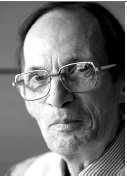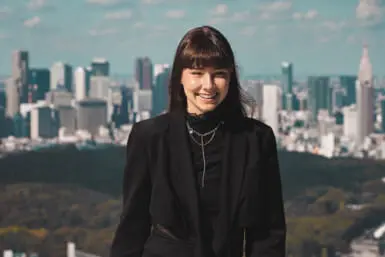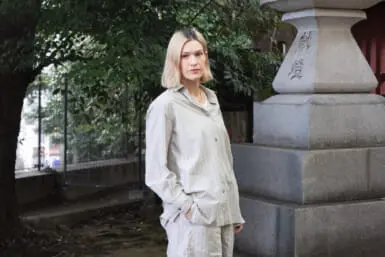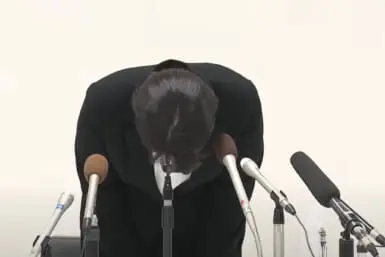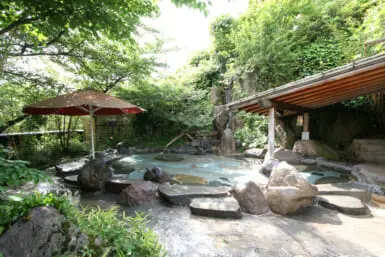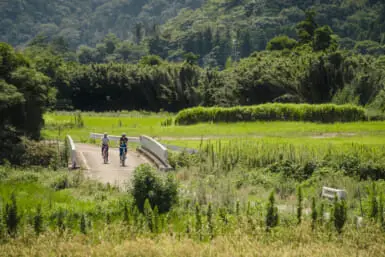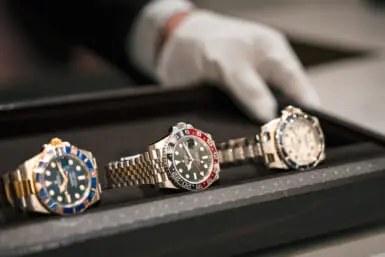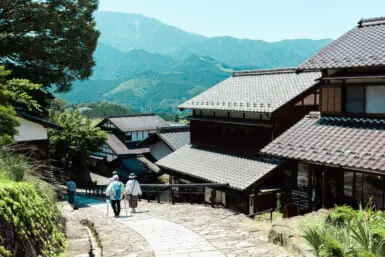I went up to the Virgin Cinemas complex in Roppongi Hills the other evening, saw a film and came out at about 10:30 p.m., to find myself in the middle of an unexpected scene. A young Japanese woman was shrieking at a man. The bloke banged a fist into her face, and down she went. But that blow gave her the strength of 10,000 dervishes and up she came.
She bounced up and tore into that guy-arms and legs flying.
“SAY YOU’RE SORRY!
“APOLOGIZE!”
She accompanied her demands with shriek after shriek..
What we have here is a new Japan-OK, I stretch a point-that is kicking over the traces and then some. I never saw such unrestrained female rage here in all my life. Those few brief seconds outside the movie house contained more action-packed reality than the film we had just seen. Not that I disliked “The Last Samurai,” the film we saw. I wouldn’t do that. Still, it was a movie…
Another thing that struck me that night was the audience, especially the gaijin-about 50 percent of the people sitting around me. They looked to be ladies and gents from the sensible professions-accountants, lawyers, advertising types.
I used to mix with such folk, when our son was at school here. No more. They sure don’t come round the Foreign Correspondents Club-or not in droves. Nor do I see them in the Okura. They live farther out, in Daikanyama, Azabu or Meguro. The center of town is not for them on the weekend. But they just might head for Roppongi Hills, eh?
That place, I noticed, got an enormous salute from the international, mainly the U.S., press at the year-end. I did my usual thing—flipped on my computer, found news.google.com and typed in “Tokyo,” and here is what I got, while germing up to do a file for the magazine Web site with which I work in London (Economist.com). Here is my preliminary scouring of headlines:
• “Tokyo’s new ‘artelligent city’: a giant-and global-vision,” a piece by Robert Marquand of the Christian Science Monitor, illustrated by a photo of the spider at Roppongi Hills.
• “The world bows to Japan’s new top export: culture,” an article by Anthony Faiola of the Washington Post-running with a photo of a construction fence painted by Takashi Murakami.
• “Tokyo builds a microcosm of itself?’ by James Brooke, a piece from the travel section of The New York Times, again illustrated with a shot of the infamous Roppongi Hills spider.
Ah, that 30-foot-high sculpture by Louise Bourgeois. Mr. Brooke notes how these days people say to each other, “Let’s meet at the spider,” and how, a year ago, that would not have happened. Indeed. Mind you, I would claim to have been the first person to say to him myself, “Let’s meet at the spider.” That was half a year ago, and how things have progressed since then.
Listen to this:
“Tokyo is the New York and Paris of Asia,” writes Mr. Marquand. “A Japanese Gershwin tune of style and sophistication.” And next:
“Japan is… the coolest nation on earth,” asserts Mr. Faiola.
“Exploring Roppongi Hills is a new key to understanding Japan today-and tomorrow,” according to Mr. Brooke.
These are not the only correspondents to rejoice in Tokyo today; there is a chorus of them. The Associated Press has just put out a story headed “Tokyo catches disco fever, again.”
Colin Donald has written a “Letter from Tokyo” for The New Zealand Herald reporting that single malts are on the way up here.
This, my friends, is not the sleepy old Edo we knew and loved. It is a city on the move. Starting here, and radiating out of here, we can see a new or hybrid Japanese culture-see, for example, the manga comics – spreading out across the world.
Consider the case of Shonen Jump, the manga monthly from Shueisha. They started up in San Francisco just over a year ago, and they are already reporting a 540,000 monthly circulation in the U.S. And that is just a beginning, I am told. I know the folk over there.
Heavens, what a turn around. And I’ve only touched the edge of the reporting here. Contemporary art “could positively boil in 2004,” said The Financial Times last weekend, naming two artists—Takashi Murakami and Yoshitomo Nara. Watch out, then, for the “Roppongi Crossing” show about to open at the Mori Art Museum in February.
Isn’t that something? Two years ago, the international press was writing that Japan was all washed up, and now they’ve changed their tune. It’s hard not to do so, with the Japanese kicking up a storm.
Henryss@gol.com

